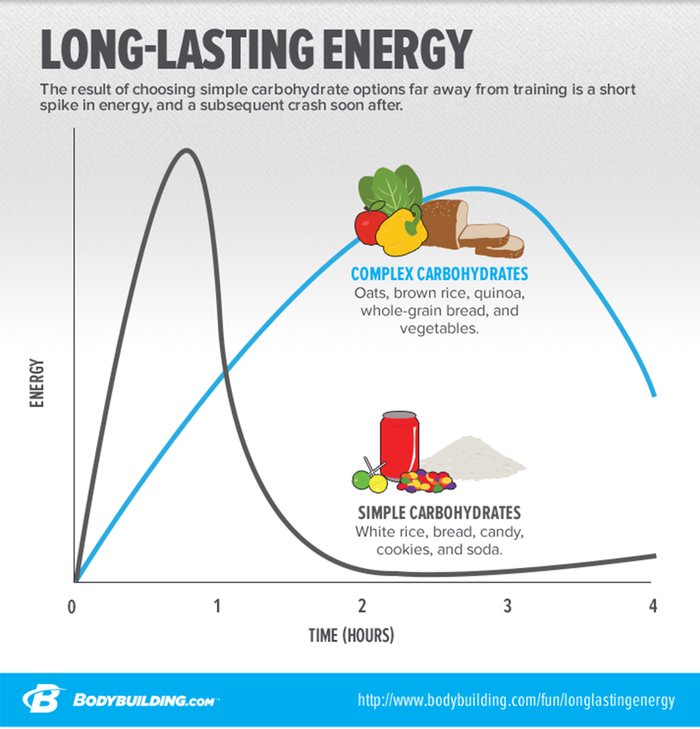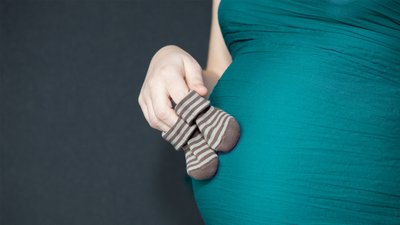After the initial period of joy that kicks in following the birth of a baby, a new mama will often undergo a moment or three of panic. Still carrying a few extra pregnancy-induced pounds, she may feel the need to diet ASAP. Some new moms slash their calories, only to find they are left with little sustenance to support long days and sleepless nights, not to mention initial breast-milk production.
There's an appropriate time and manner to approach getting your pre-pregnancy belly and figure back. Start implementing these six rules today.
1. Wait a Minute (or Two Months)
Within a few days of getting back home from the hospital, you may feel as if you're ready to diet. Don't. Giving birth is a major undertaking, and your body needs appropriate time to recover. Plus, dieting is stressful, mentally and physically. It's not a good idea to jump into a tough situation immediately after childbirth.
Make sure you're eating enough quality food to optimize breast-milk production and nutrition for your newborn. Skimping on calories, particularly from fat, can interfere with breast-milk production.
Pro tip: Once you do transition to a dedicated diet, keep your weight loss slow and steady. Weight loss any faster than 1.5 pounds per week may compromise your breast-milk quantity.
2. Focus on Fibrous Carbs
Although your focus will be your newborn, other priorities such as children, a job, or maintaining your home will begin to regain importance, and you'll have a lot on your plate. Furthermore, you won't be setting any sleep PRs anytime soon, which means your food choices will play an invaluable role in maximizing energy throughout the day.
Focus on fibrous carbs to maintain consistent energy levels. Fiber slows down digestion, which promotes long-lasting energy. If you consistently provide yourself with low-fiber options, you'll ride an energy rollercoaster throughout the day. Not a good option to tackle the days ahead!

Pro tip: Staple carb sources should include oats, brown and wild rice, quinoa, couscous, sweet potatoes, and ample fruits and vegetables.
3. Make Healthy Fats Your Friend
The benefits of unsaturated fatty acids are extensive, and applicable to all. However, specifically post-pregnancy, omega-3-rich fats are invaluable. Docosahexaenoic acid (DHA), in particular, plays a major role in infant nervous-system development. Your dietary intake is directly reflected in your breast milk.[1] The more DHA-rich foods you eat, the more DHA provided to your baby.
Furthermore, young children whose mothers supplemented modestly with DHA tend to have higher attention scores during the first four months of breastfeeding than children whose mothers didn't.[2] Choosing omega-3-rich foods, or choosing to supplement regularly, could provide a huge boost in your child's learning down the road. Consider that a worthy investment.
Pro tip: Supplement with 200 milligrams of DHA per day, or choose DHA-rich foods daily. These include anchovies, salmon, herring, tuna, organ meats, and omega-3 supplements. Chicken and egg yolks also contain a small amount.
4. (Continue to) Prioritize Protein
Your protein needs do not change post-partum. Continue aiming for 25-35 grams every 3-4 hours. Maintaining a high-protein diet (defined as consuming 0.7 grams or more of protein per pound of body weight) will help to promote fullness, maintain metabolic rate, and preserve your hard-earned muscle mass.
Pro tip: Focus on lean protein. Examples include chicken and turkey breast (without the skin), pork tenderloin, lean beef (sirloin, filet, and flank steak), lean ground meats (90/10 or leaner), fish, seafood, eggs (yolks and whites), and low-fat dairy.
Fatty fish such as salmon, mackerel, and egg yolks are higher in fats but rich in omega-3 fatty acids. These foods should not be avoided.
5. Hydrate, Hydrate, Hydrate
Breastfeeding moms risk dehydration due to frequent fluid loss. Among the many other priorities at hand, hydration often gets placed on the back burner. This can lead to impaired energy, frequent headaches, false hunger, impaired performance, and reduced breast-milk production.

Pro tip: Carry a water bottle with you everywhere you go. And of course, be sure to keep refilling it. Also, make it a habit to drink at least 12 ounces of water with each meal, as part of a daily fluid goal of 125 ounces.[3,4] If you're not there yet, start slowly, and gradually increase your daily fluid consumption over time.
6. Get Active—Sooner Rather Than Later
There will be days you don't feel like doing anything but sleeping, and that's understandable. But if retrieving your pre-pregnancy belly is a top goal of yours, you need to muster the energy and willpower to move, at least a little. Not only will moving more help you return to your pre-pregnancy body, but it will also help you feel more energized throughout the day.
Pro tip: Choose a form of exercise that you enjoy, and ease back into it. Start with once or twice per week, and gradually increase the number of sessions per week as you're able to. Check out Jamie Eason's 12-Week Post-Pregnancy Trainer for a complete program designed around your goal!
One Last Tip
If you're breastfeeding, this may further support your weight-loss efforts. Breastfeeding may increase energy expenditure by 300-500 calories per day, which is a significant amount considering your energy from any other form of intentional calorie expenditure is borderline nonexistent.
A study published in the American Journal of Clinical Nutrition found that mothers who breastfed regularly for at least six months had greater weight loss 12 months after pregnancy versus those mothers who did not breastfeed for at least six months.[5] This is a highly personal choice, but if you've made the decision, know that this is benefitting baby and you in more than one way.
References
- Fidler, N., Sauerwald, T., Pohl, A., Demmelmair, H., & Koletzko, B. (2000). Docosahexaenoic acid transfer into human milk after dietary supplementation: a randomized clinical trial. Journal of Lipid Research, 41(9), 1376-1383.
- Jensen, C. L., Voigt, R. G., Llorente, A. M., Peters, S. U., Prager, T. C., Zou, Y. L., ... & Heird, W. C. (2010). Effects of early maternal docosahexaenoic acid intake on neuropsychological status and visual acuity at five years of age of breast-fed term infants. The Journal of Pediatrics,157(6), 900-905.
- Sawka, M.N., Burke, L.M., Eichner, E.R., Maughan, R.J., Montain, S.J. & Stachenfeld, N.S. (2007). ACSM Position Stand: Exercise and Fluid Replacement. Medicine and Science in Sports and Exercise, 39(2), 377-390.
- Casa, D.J. & Clarkson, P.M. (2005). American College of Sports Medicine Roundtable on Hydration and Physical Activity: Consensus Statements. Current Sports Medicine Reports, 4, 115-127.
- Dewey, K. G., Heinig, M. J., & Nommsen, L. A. (1993). Maternal weight-loss patterns during prolonged lactation. The American Journal of Clinical Nutrition, 58(2), 162-166.

